The formula for stunning design
William De Morgan’s captivating pottery and glazed tiles feel beautifully organic to the naked eye. However, these iconic designs are underpinned by strict geometric principles. Exhibition curator Sarah Hardy reveals the secret mathematical structures behind the inventive floral designs and vivid colours.
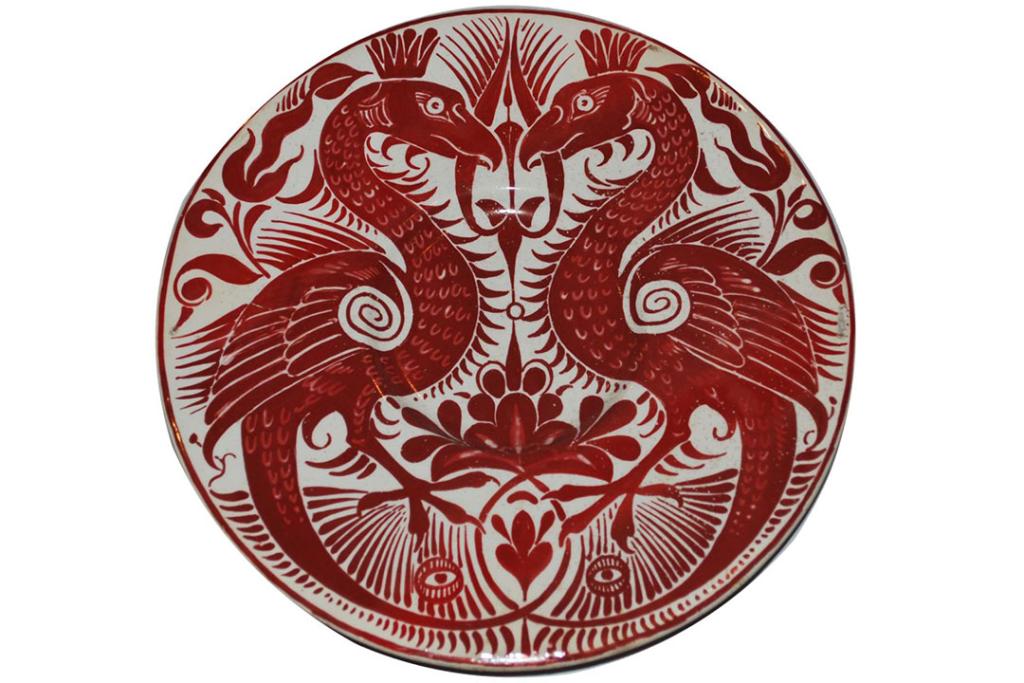
You might not think that Victorian ceramics and maths have much common, but the two are perfectly combined in De Morgan’s creations.
The idea for the Sublime Symmetry exhibition was actually inspired by a frustrated maths teacher friend of mine, who desperately wanted to ignite her passion for the subject in school children. She complained that whilst her colleagues in the history department went on school trips to castles and stately homes, she was confined to her classroom. This moved me to create an art exhibition which focussed on mathematics.
I was surprised by how easy this was once I began my research. I soon discovered that William De Morgan’s father had been the notable mathematician August De Morgan. Famed for his work on logic and reasoning, Augustus had been the first professor of mathematics at University College London. He was an inspiration to his children and this manifested in William De Morgan’s designs.
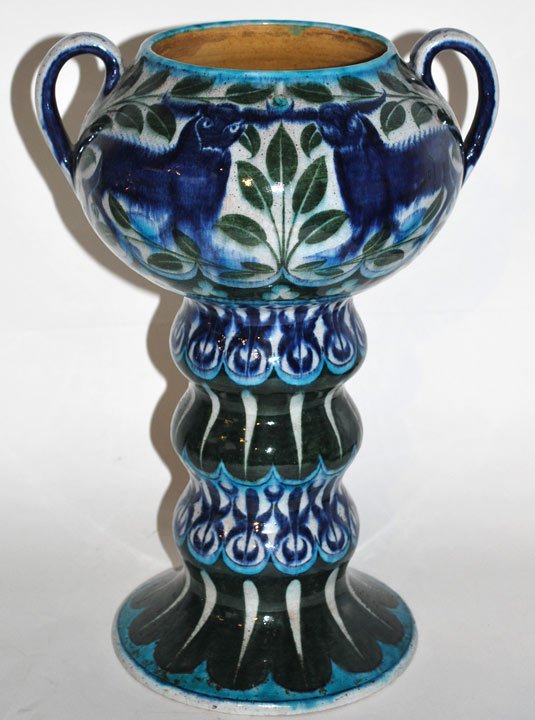
Bull Vase
Although at first glance William De Morgan’s elaborate designs of flowers and patterns feel organic, closer examination reveals that motifs are arranged around lines of symmetry to give balance and order to the piece. This can be seen most clearly in the Fan Tile Panel; even the curl of the tulip’s leaf has been created in the mirror image from one half of the fan to the next.
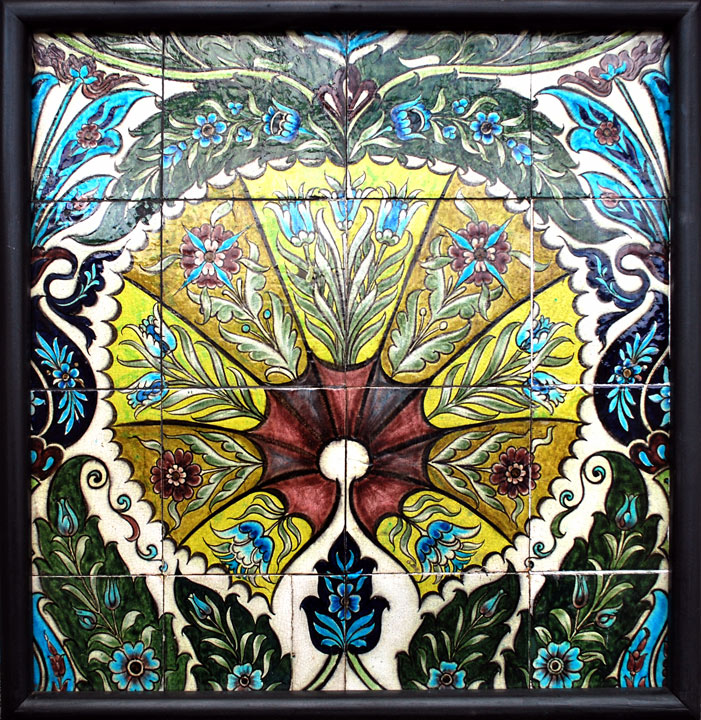
Fan Tile Panel
Each of De Morgan’s ceramics show his interest in shape, pattern and symmetry. Most of the designs were planned symmetrically: he mirrored motifs, he rotated them, and he scaled them up and down. Constructing a pattern round a central line of symmetry gives balance to a design and is linked to beauty in art.
With his gift for maths, De Morgan made his designs work on flat and curved surfaces, and his grasp of geometry enabled him to make complex repeat patterns. He pictured how a single tile could repeat to cover a wall, demonstrated in his Honeysuckle Tile Panel. Seeing the whole pattern in this way reveals the splendour of his designs.

Honeysuckle Tile Panel
William De Morgan was born in 1834 in Gower Street London, around the same time as King’s Cross and Euston stations were being built. The noise, the pollution, and the bustle of the city was all around him and he looked to nature for escape. As a youngster he would read Thomas Bewick’s History of British Birds, an illustrated guide to his native avians. These birds came alive in De Morgan’s imagination and his later designs feature swans, peacocks and parrots in heavily stylised patterns. They evoke fantasy or tropical landscapes miles away from the grey London smog.
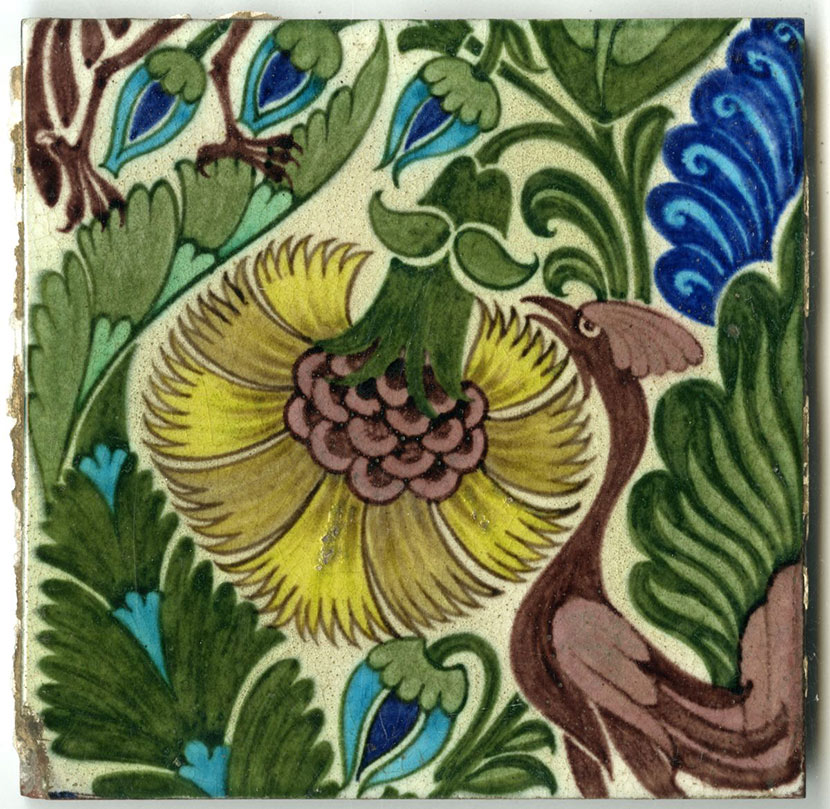
Flamingo and Carnation Tile - Repeat B
Even in his attempts to evoke other worldliness, De Morgan underpins his designs with strict geometric structures. Stylised crowned swans glimmer in brilliant lustre from his Crowned Swan Plate (pictured at the top of the article) but as each faces the other across a background of abstract motifs, order is provided by their symmetrical arrangement.
De Morgan was known for his brilliant sense of humour and this does come at the expense of symmetry in some designs. Facing each other across the central motif in Ogee Tile Panel are two flying birds. De Morgan couldn’t resist painting them in different colours to add life and joy to the decoration despite this costing a symmetrical design.

Floral Ogee Tile Panel
Given that the exhibition was inspired by maths lessons, it made sense to involve the children learning maths in its evolution. Each object on display has been selected by a key stage 2 pupil leaning about symmetry, reflections, angles and patterns in their maths lessons at school. They helped to write the object labels and made sure our worksheets and education pack (which can be downloaded as a free pdf) were up to scratch.
Kids are truly our harshest critics and I hope that by involving children from the start, this exhibition will now have a wide appeal to budding mathematicians and ceramics fans young and old.
My favourite piece
The most accomplished piece in the exhibition (and the one I’d save first in a fire!) is Fish and Net Vase. This complex double pattern required every ounce of ingenuity De Morgan had to create. The bulbous form of the vase has been painted with a pattern of tessellating fish scales which grow and twist over the body of the vase, exemplifying the round curves. De Morgan would have painted this delicate net with wax and let it dry. Then, he painted a shoal of red lustre fish swimming across the surface and fired the vase in a kiln of his own invention.
At the critical temperature, wood chips were thrown into the kiln where they burst into flames and reduced the level of oxygen in the kiln to almost zero. A chemical reaction takes place under this circumstance so that the oxygen in the red copper oxide glaze reacts with the carbon monoxide in the kiln’s air, reducing the glaze to pure copper so that the fish vase reflects shining red iridescence. Of course, the heat of the kiln also melts the wax, leaving De Morgan’s fish swimming under the net.
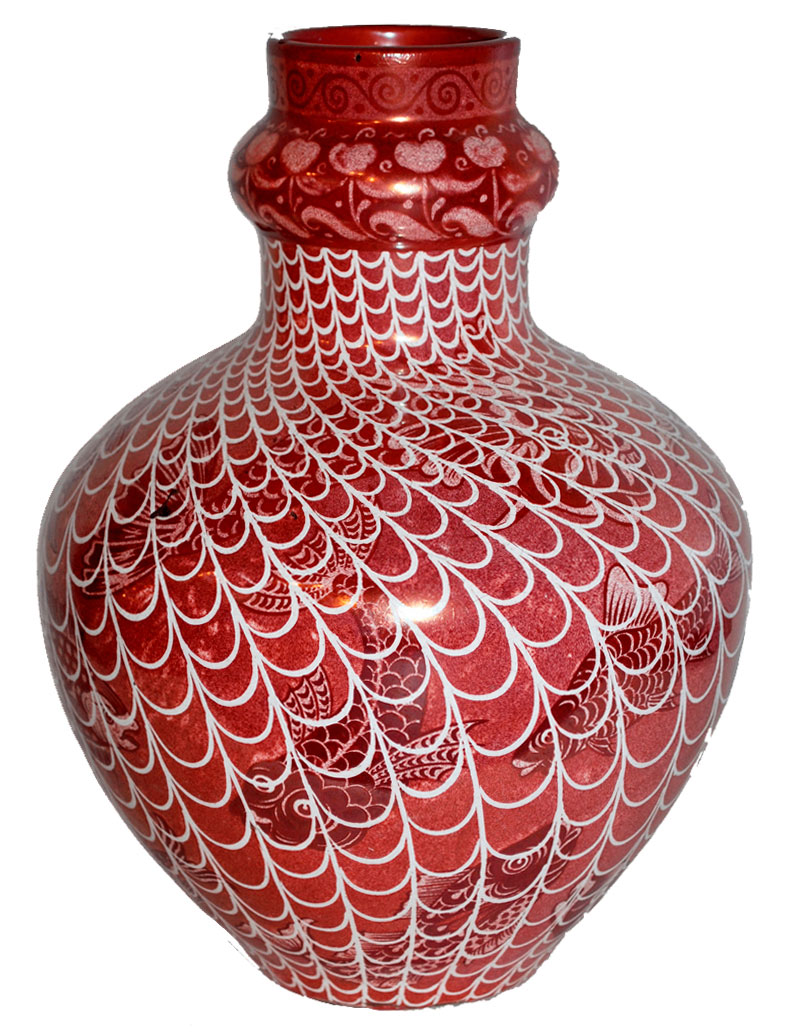
Fish and Net Vase
